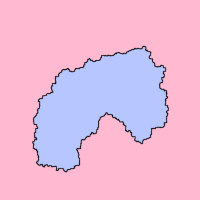
Photo from wikipedia
We consider the spectrum of Andreev bound states (ABSs) in an exemplary four-terminal superconducting structure where four chaotic cavities are connected by quantum point contacts to the terminals and to… Click to show full abstract
We consider the spectrum of Andreev bound states (ABSs) in an exemplary four-terminal superconducting structure where four chaotic cavities are connected by quantum point contacts to the terminals and to each other forming a ring. We nickname the resulting device 4T-ring. Such a tunable device can be realized in a 2D electron gas-superconductor or a graphene-based hybrid structure. We concentrate on the limit of a short structure and large conductance of the point contacts where there are many ABS in the device forming a quasicontinuous spectrum. The energies of the ABS can be tuned by changing the superconducting phases of the terminals. We observe the opening and closing of gaps in the spectrum upon changing the phases. This concerns the usual proximity gap that separates the levels from zero energy as well as less usual "smile" gaps that split the levels of the quasicontinuous spectrum. We demonstrate a remarkable crossover in the overall spectrum that occurs upon changing the ratio of conductances of the inner and outer point contacts. At big values of the ratio (closed limit), the levels exhibit a generic behavior expected for the spectrum of a disordered system manifesting level repulsion and Brownian "motion" upon changing the phases. At small values of the ratio (open limit), the levels are squeezed into narrow bunches separated by wide smile gaps. Each bunch consists of almost degenerate ABS formed by Andreev reflection between two adjacent terminals. We study in detail the properties of the spectrum in the limit of a small ratio, paying special attention to the crossings of bunches. We distinguish two types of crossings: (i) with a regular phase dependence of the levels and (ii) crossings where the Brownian motion of the levels leads to an apparently irregular phase dependence. We work out a perturbation theory that explains the observations both at a detailed level of random scattering in the device and at a phenomenological level of positively defined random matrices. The unusual properties of the spectrum originate from rather unobvious topological effects. The topology of the first kind is restricted to the semiclassical limit and related to the winding of the semiclassical Green function. It is responsible for the closing of the proximity gaps. The topology of the second kind comes about the discreteness of the number of modes in the point contacts and is responsible for the smile gaps. The topology of the third kind leads to the emergence of Weyl points in the spectrum and is not discussed in the context of this article.
Journal Title: Physical Review B
Year Published: 2017
Link to full text (if available)
Share on Social Media: Sign Up to like & get
recommendations!